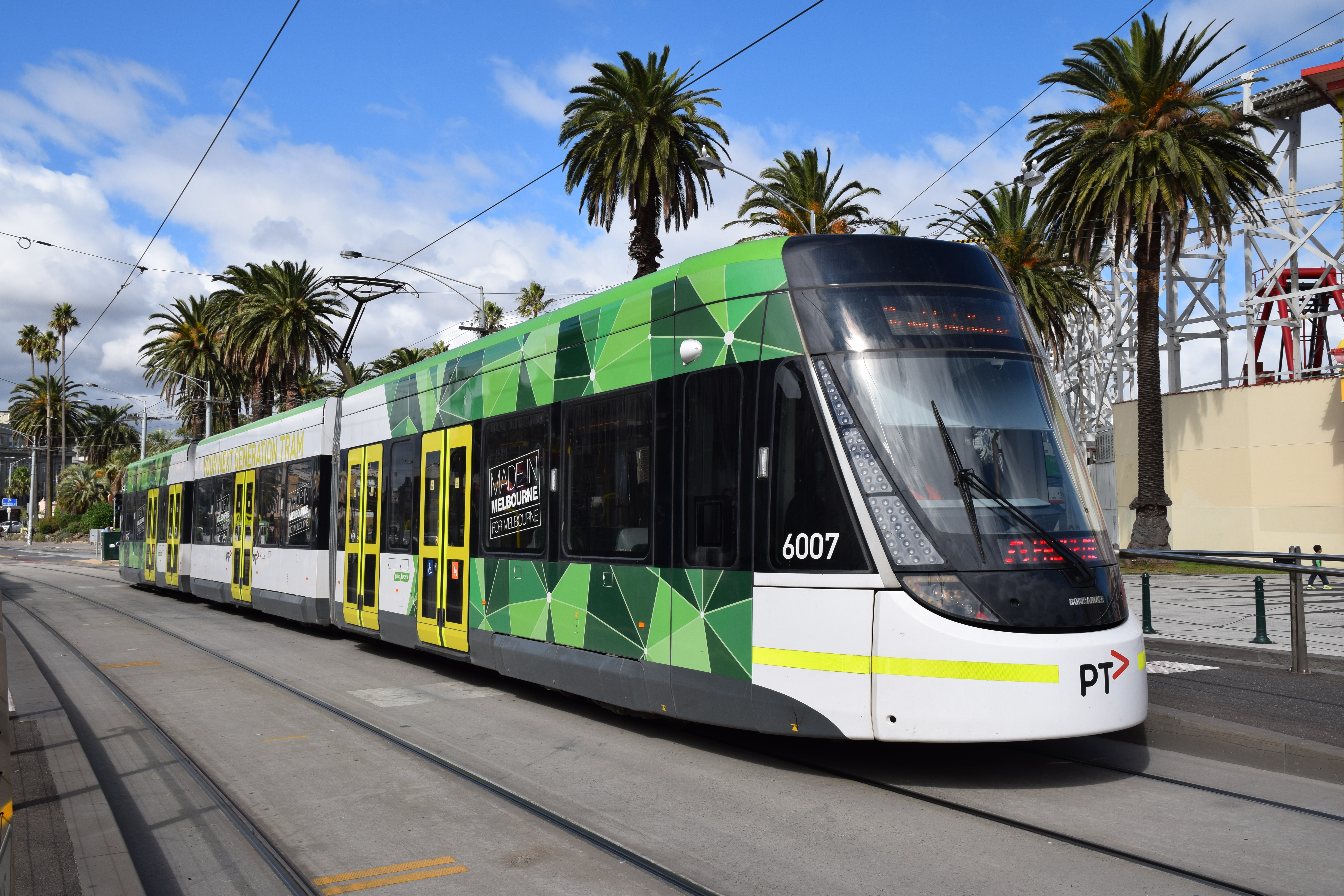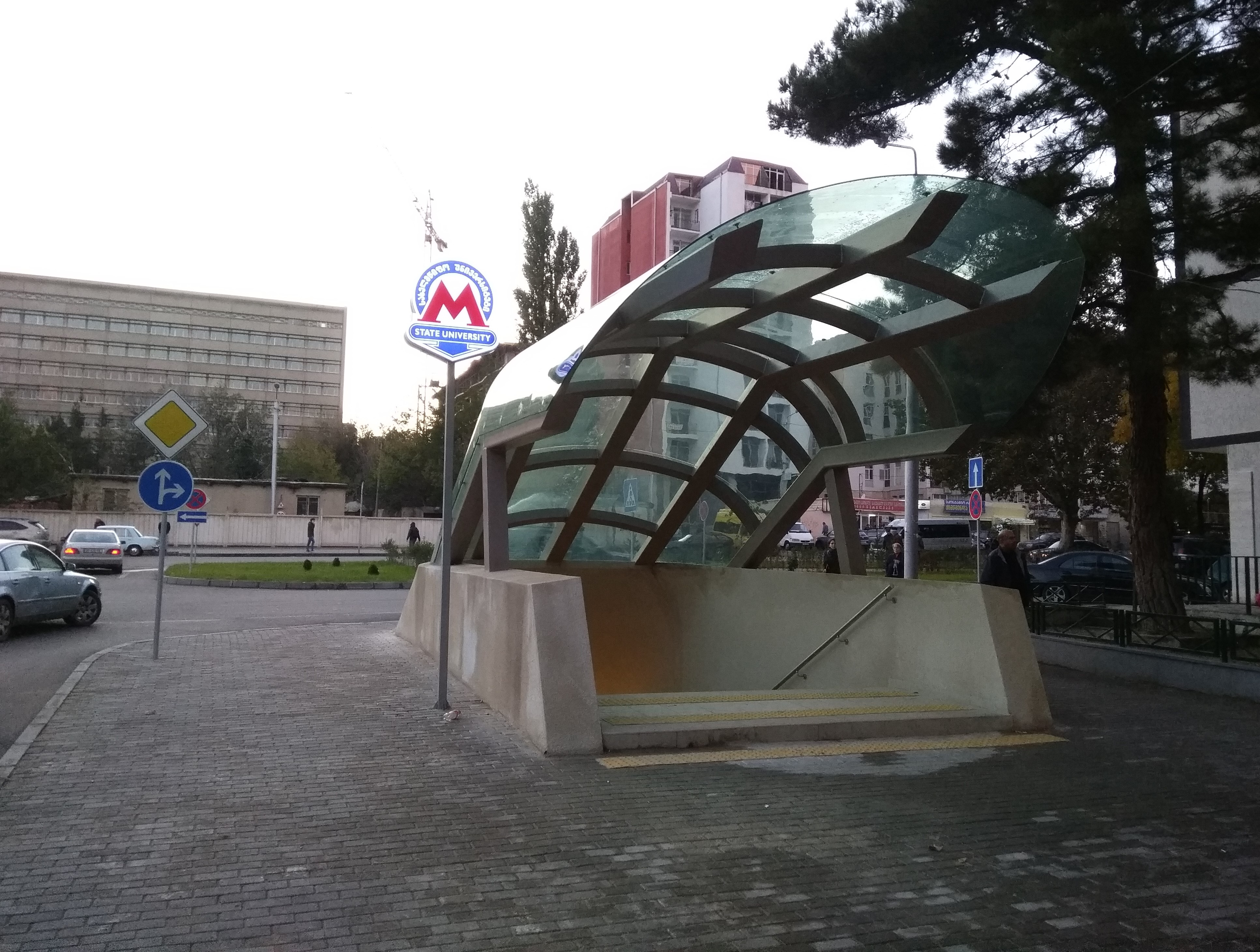|
Trams In Tbilisi
The Tbilisi tramway network ( ka, თბილისის ტრამვაი) operated in the Georgian capital city of Tbilisi between 1883 and 2006. In 1986 it extended to 105 km (65 miles) of (single) track covering 12 different routes. History The tram service was opened in April 1883, using horse traction. It was electrified between June 1904 and August 1905, and the system, which had originally been established as a private enterprise, was taken over by the municipality in 1915. The original metre gauge track was replaced between 1933 and 1942 with a broad gauge A broad-gauge railway is a railway with a track gauge (the distance between the rails) broader than the used by standard-gauge railways. Broad gauge of , commonly known as Russian gauge, is the dominant track gauge in former Soviet Union (CIS ..., which corresponded with the Soviet standard. The early post- war period saw further expansion, with the extent of the network reaching 105 km (65 mil ... [...More Info...] [...Related Items...] OR: [Wikipedia] [Google] [Baidu] |
Tbilisi
Tbilisi ( ; ka, თბილისი ), in some languages still known by its pre-1936 name Tiflis ( ), is the capital and the largest city of Georgia, lying on the banks of the Kura River with a population of approximately 1.5 million people. Tbilisi was founded in the 5th century AD by Vakhtang I of Iberia, and since then has served as the capital of various Georgian kingdoms and republics. Between 1801 and 1917, then part of the Russian Empire, Tiflis was the seat of the Caucasus Viceroyalty, governing both the northern and the southern parts of the Caucasus. Because of its location on the crossroads between Europe and Asia, and its proximity to the lucrative Silk Road, throughout history Tbilisi was a point of contention among various global powers. The city's location to this day ensures its position as an important transit route for energy and trade projects. Tbilisi's history is reflected in its architecture, which is a mix of medieval, neoclassical, Beaux Art ... [...More Info...] [...Related Items...] OR: [Wikipedia] [Google] [Baidu] |
Broad Gauge
A broad-gauge railway is a railway with a track gauge (the distance between the rails) broader than the used by standard-gauge railways. Broad gauge of , commonly known as Russian gauge, is the dominant track gauge in former Soviet Union (CIS states, Baltic states, Rail transport in Georgia (country), Georgia and Ukraine), Rail transport in Mongolia, Mongolia and Rail transport in Finland, Finland. Broad gauge of , commonly known as Irish Gauge, is the dominant track gauge in Ireland, and the Australian states of Rail transport in Victoria, Victoria and Railways in Adelaide, Adelaide. Broad gauge of , commonly known as Iberian gauge, is the dominant track gauge in Spain and Portugal. Broad gauge of , commonly known as Indian gauge, is the dominant track gauge in Indian Railways, India, Pakistan Railways, Pakistan, Bangladesh, Sri Lanka Railways, Sri Lanka, Rail transport in Argentina, Argentina, Empresa de los Ferrocarriles del Estado, Chile, and on Bay Area Rapid Transit, BAR ... [...More Info...] [...Related Items...] OR: [Wikipedia] [Google] [Baidu] |
Tram
A tram (called a streetcar or trolley in North America) is a rail vehicle that travels on tramway tracks on public urban streets; some include segments on segregated right-of-way. The tramlines or networks operated as public transport are called tramways or simply trams/streetcars. Many recently built tramways use the contemporary term light rail. The vehicles are called streetcars or trolleys (not to be confused with trolleybus) in North America and trams or tramcars elsewhere. The first two terms are often used interchangeably in the United States, with ''trolley'' being the preferred term in the eastern US and ''streetcar'' in the western US. ''Streetcar'' or ''tramway'' are preferred in Canada. In parts of the United States, internally powered buses made to resemble a streetcar are often referred to as "trolleys". To avoid further confusion with trolley buses, the American Public Transportation Association (APTA) refers to them as " trolley-replica buses". In the ... [...More Info...] [...Related Items...] OR: [Wikipedia] [Google] [Baidu] |
Horsecar
A horsecar, horse-drawn tram, horse-drawn streetcar (U.S.), or horse-drawn railway (historical), is an animal-powered (usually horse) tram or streetcar. Summary The horse-drawn tram (horsecar) was an early form of public rail transport, which developed out of industrial haulage routes that had long been in existence, and from the omnibus routes that first ran on public streets in the 1820s{{{citation needed, date=February 2022, using the newly improved iron or steel rail or ' tramway'. They were local versions of the stagecoach lines and picked up and dropped off passengers on a regular route, without the need to be pre-hired. Horsecars on tramlines were an improvement over the omnibus, because the low rolling resistance of metal wheels on iron or steel rails (usually grooved from 1852 on) allowed the animals to haul a greater load for a given effort than the omnibus, and gave a smoother ride. The horse-drawn streetcar combined the low cost, flexibility, and safety ... [...More Info...] [...Related Items...] OR: [Wikipedia] [Google] [Baidu] |
Metre Gauge Railway
Metre-gauge railways are narrow-gauge railways with track gauge of or 1 metre. The metre gauge is used in around of tracks around the world. It was used by European colonial powers, such as the French, British and German Empires. In Europe, large metre-gauge networks remain in use in Switzerland, Spain and many European towns with urban trams, but most metre-gauge local railways in France, Germany and Belgium Belgium, ; french: Belgique ; german: Belgien officially the Kingdom of Belgium, is a country in Northwestern Europe. The country is bordered by the Netherlands to the north, Germany to the east, Luxembourg to the southeast, France to ... closed down in the mid-20th century, although many still remain. With the revival of urban rail transport, metre-gauge light metros were established in some cities, and in other cities, metre gauge was replaced by standard gauge. The slightly-wider gauge is used in Sofia. Examples of metre-gauge See also * Itali ... [...More Info...] [...Related Items...] OR: [Wikipedia] [Google] [Baidu] |
Broad Gauge
A broad-gauge railway is a railway with a track gauge (the distance between the rails) broader than the used by standard-gauge railways. Broad gauge of , commonly known as Russian gauge, is the dominant track gauge in former Soviet Union (CIS states, Baltic states, Rail transport in Georgia (country), Georgia and Ukraine), Rail transport in Mongolia, Mongolia and Rail transport in Finland, Finland. Broad gauge of , commonly known as Irish Gauge, is the dominant track gauge in Ireland, and the Australian states of Rail transport in Victoria, Victoria and Railways in Adelaide, Adelaide. Broad gauge of , commonly known as Iberian gauge, is the dominant track gauge in Spain and Portugal. Broad gauge of , commonly known as Indian gauge, is the dominant track gauge in Indian Railways, India, Pakistan Railways, Pakistan, Bangladesh, Sri Lanka Railways, Sri Lanka, Rail transport in Argentina, Argentina, Empresa de los Ferrocarriles del Estado, Chile, and on Bay Area Rapid Transit, BAR ... [...More Info...] [...Related Items...] OR: [Wikipedia] [Google] [Baidu] |
Soviet Union
The Soviet Union,. officially the Union of Soviet Socialist Republics. (USSR),. was a List of former transcontinental countries#Since 1700, transcontinental country that spanned much of Eurasia from 1922 to 1991. A flagship communist state, it was nominally a Federation, federal union of Republics of the Soviet Union, fifteen national republics; in practice, both Government of the Soviet Union, its government and Economy of the Soviet Union, its economy were highly Soviet-type economic planning, centralized until its final years. It was a one-party state governed by the Communist Party of the Soviet Union, with the city of Moscow serving as its capital as well as that of its largest and most populous republic: the Russian Soviet Federative Socialist Republic, Russian SFSR. Other major cities included Saint Petersburg, Leningrad (Russian SFSR), Kyiv, Kiev (Ukrainian Soviet Socialist Republic, Ukrainian SSR), Minsk (Byelorussian Soviet Socialist Republic, Byelorussian SSR), Tas ... [...More Info...] [...Related Items...] OR: [Wikipedia] [Google] [Baidu] |
Second World War
World War II or the Second World War, often abbreviated as WWII or WW2, was a world war that lasted from 1939 to 1945. It involved the World War II by country, vast majority of the world's countries—including all of the great powers—forming two opposing military alliances: the Allies of World War II, Allies and the Axis powers. World War II was a total war that directly involved more than 100 million Military personnel, personnel from more than 30 countries. The major participants in the war threw their entire economic, industrial, and scientific capabilities behind the war effort, blurring the distinction between civilian and military resources. Air warfare of World War II, Aircraft played a major role in the conflict, enabling the strategic bombing of population centres and deploying the Atomic bombings of Hiroshima and Nagasaki, only two nuclear weapons ever used in war. World War II was by far the List of wars by death toll, deadliest conflict in hu ... [...More Info...] [...Related Items...] OR: [Wikipedia] [Google] [Baidu] |
Rīgas Vagonbūves Rūpnīca
Rīgas Vagonbūves Rūpnīca (RVR) was a Latvian rail and tram vehicle manufacturer, most notable for its multiple unit trains and tram vehicles used throughout the Soviet Union and its successor states. It has been insolvent and non-operational since 2017. History The original works were founded in 1895 by the businessman Oscar Freywirth under the name Fēnikss. In 1936, Fenikss was reorganised into Joint Stock Company Vairogs, which later manufactured Ford-Vairogs automobiles under licence. Expropriated by the state following the takeover of Latvia by the Soviet Union and renamed RVR, it became for many years the largest producer of electric and diesel trains in the USSR and also produced tramcars. Its best known products are the ER1, ER2, ER7, ER9 and ER31 electric trains, DR1, DR1A and DR1P diesel trains, many of which are still in service today. Between 1973 and 1988 it built the high-speed ER200 train. Following the collapse of the Soviet Union and the Comec ... [...More Info...] [...Related Items...] OR: [Wikipedia] [Google] [Baidu] |
Tbilisi Metro
The Tbilisi Metro ( ka, თბილისის მეტროპოლიტენი) is a rapid transit system in the Georgian capital Tbilisi. Opened on 11 January 1966, it was the fourth metro system in the former Soviet Union. Like other ex-Soviet metros, most of the stations are very deep and vividly decorated. At present the system consists of two lines, in total length, serving 23 stations. In 2017, the Metro transported 113.827 million passengers. The Metro is operated by the Tbilisi Transport Company, which began operation the same year as the Tbilisi Metro, in 1966. History Tbilisi (officially known as Tiflis until 1936), the capital of Georgia, was considered historically to be one of the most important cities of the Soviet Union, particularly because of its political position as being the most significant city in the Caucasus and the capital of the Transcaucasian Socialist Federative Soviet Republic which lasted until 1936. The city grew quite rapidly during t ... [...More Info...] [...Related Items...] OR: [Wikipedia] [Google] [Baidu] |






